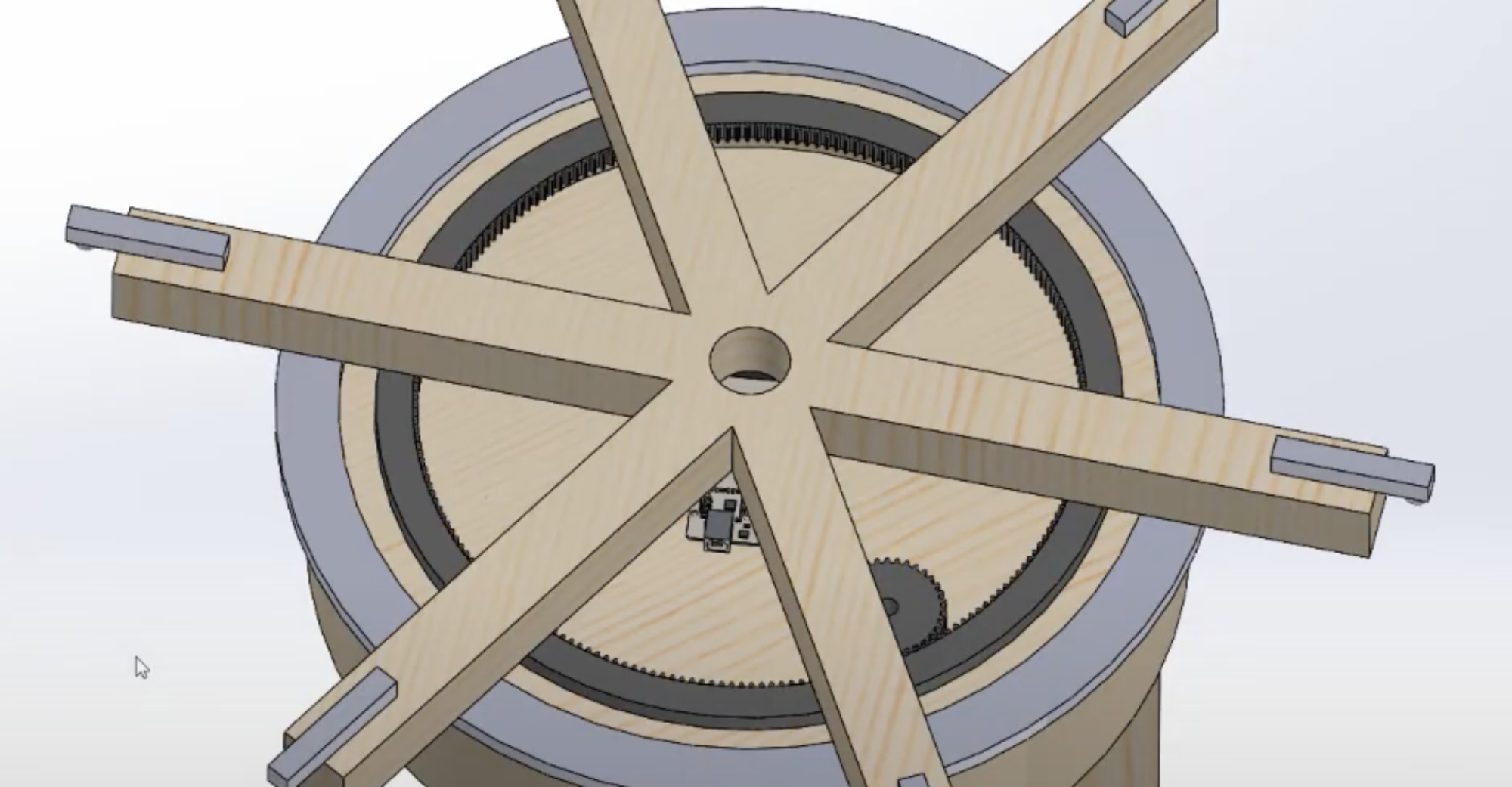- One of the risks is access to machines in TechSpark for the construction of our hardware rack. This risk is lessened from last weak because of some design changes. We plan to CNC cut sheets of plywood and join them with glue instead of cutting wood with other machines and screwing them together. This reduces the amount of training or oversight needed because a CNC machine is relatively easier to use. We have also found some potential people with training to help us with using the machine.
- If we are not able to use the CNC machine, our contingency plan is to use the TechSpark provided quarter-inch plywood and the laser cutters, because those machines do not require formal training to use.
- Some of the ordered components may not work, so we ordered spares and plan to test them out within the next week.
- The only thing that really changed was the design of our hardware rack after going into the specifics on how to handle weight imbalance and robustness.
- Current rack design!

- A was written by Ryan Lin, B was written by Doreen Valmyr and C was written by Surafel Tsadik.
Part A: This product solution in general does not apply to the need of public health, safety, and welfare. However, there may be some small factors of our project that contributes to this topic. For example, perhaps the removal of a ticket system and the ease of checking in their personal items brings a sense of ease to people that may be stressed attending an event. Our product also allows customers to feel safe in knowing that their items are kept track of and kept in a specific position on our item stand. In terms of meeting physical safety and public health there isn’t much of a connection. This product also doesn’t provides for the basic needs of people because it is primarily used for events that usually don’t support people’s basic needs.
Part B: Our facial recognition algorithm will use tools like OpenCV to characterize and distinguish different faces, so things involving a person’s social group, whether cultural, political, or economic, will not be taken into consideration when checking in or checking out a user. In addition to this, our product can be used in a variety of social contexts and within all types of social gatherings that necessitate a attendee having to set aside particular personal items when attending that particular event. Without strict rules being set on the items that can be on the rack, simply the assumption that it will mostly be used for coats, users will not be limited to the items they can set aside, but mostly the weights of those items. As a result, users are able use our product for their required social gatherings without limitations.
Part C: Coat checks at large events currently puts too much responsibility on the attendees. Attendees usually have to keep track of a ticket/number throughout the event, which adds a whole layer of complexity during a time when attendees may not want a complex experience (a more relaxed event, a very formal event). It becomes worse when people begin to lose/forget their identifier, leading to a messy (and potentially malicious) retrieval of checked-in coats. Our product eliminates the need for external identifiers like a ticket or number as you can check in using your face (which everyone will always have). Without the need to keep track of an external identifier, attendees can focus more on the event they’re attending and have a seamless process of retrieving their coats.


